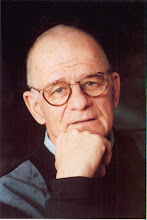Toyota Finds Itself in the Brand ER – and Most of Its Wounds are Self-Inflicted
Irony of ironies, now Toyota is a poster child for brand neglect. Having bested GM for two years running to become the largest sell car company in the world, Toyota finds itself losing market share in key markets; losing its reputation for quality for the first time in the U.S.; being criticized for faulty engineering, making ho-hum cars with no zip; and losing touch with its customers.
The December 12th issue of the Economist has a cover story entitled “Toyota Slips Up” arted with a big fat banana. It details many of Toyota woes. In China, for instance, where it lags behind VW and GM, it has been “slow off the mark” to compete on performance and pricing—with market share dropping two points.
In Europe it is criticized for offering too many boring models. In the U.S. it is experiencing a series of image and engineering problems across a wide spectrum of measurements, including those of J.D. Power, Consumer Reports and Strategic Vision, which bases its “Total Value Index” on feedback from 48,000 buyers. In an annual study of three-year-old vehicles J.D. Power placed Toyota behind Buick and Jaguar.
But what is not mentioned is Toyota’s long history of lackluster marketing, which in the U.S. has been particularly pathetic over the last 10 to 20 years. People working at Saatchi & Saatchi and DentsuAmerica, Toyota’s current agencies, will not talk about Toyota’s marketing.
But I know from research on my book, “Casting for Big Ideas,” that Toyota’s North American management has little interest in creating impactful advertising, saying that it could virtually sell out its inventory of Camrys and Corollas without any advertising and post its near $1 billion in media expenditures towards sales discounts and profit. When asked why Toyota didn’t do that, my source merely shrugged his shoulders, and told me: “They don’t want to be accused of not understanding the value of good advertising—but they don’t want to commission it either.”
The fact is part of the loss of a halo effect around Camry and Corolla has to do with the failure of Toyota to upgrade styling and in-car features to keep pace with market gainers Hyundai and VW. But also to Toyota’s failure to re-enforce brand loyalty and perception with memorable advertising. You can’t keep pumping out semi-annual Toyotathon marching bands and silly commercials with balloons and stupid sales patter and expect to have any lasting emotional impact. Toyota’s advertising at all levels is predictable and forgettable.
Toyota’s new CEO, Akio Toyoda, 53, grandson of the founder, was blunt in speaking to the Japanese press that the company could be locked into a spiral of decline. And certainly some of Toyota’s problems have to do with how any big company ossifies as it reaches No.1 and begins to regard itself as a Master of the Universe. We here in America have lived with that realization while we watched our three great automakers, GM, Ford and Chrysler, slowly slip into irrelevancy over a 40- to 50-year period.
But improving Toyota’s reputation in the U.S. is not just a matter of better engineering—although for a brand whose bedrock values quality and safety its problems in these areas must be immediately corrected. Brands also need nurturing. I like to compare mature brands to great singers such as Paul McCartney whose new CDs are still very much in demand. Like McCartney, legacy brands must be continually re-invented and renewed with the creation of new sounds and ideas, new kinds of connections in the digital space and old kinds of promotions such as a national tour to spark interest. Most of all they need to have their contribution to the culture trigger excitement and interest.
When you talk about cars you may be talking about simple utility – four wheels and a motor to get you to the grocery. But you can’t help wanting more than transportation. We choose a car that makes us happy every time we crawl behind the wheel and becomes such an extension of ourselves that we are proud to show it to others.
Toyota has somehow forgotten that simple lesson. You can be sure it has been told about its failings by countless consultants, ad agency gurus and car magazine writers. But I don’t hear Mr. Toyoda including marketing in his calls to the troops. At the Tokyo motor show he said, “I want to see Toyota build cars that are fun and exciting to drive.” Great if you can do that. But meanwhile start selling the inventory of Camrys and Corollas sitting on dealer lots right now. And down the road, re-discover Toyota’s core values and find innovative ways to communicate those values to the car buying public.
Toyota should expect more competition from Ford and GM—if not the newly reformed Chrysler-Renault partnership. And VW and Hyundai are not far behind. So Toyota has to make cars that fun to drive in a hurry. And I’m looking for advertising that is fun to listen to and watch. It might take three years for Tokyo to begin spitting out a new generation of Toyotas. I believe a new attitude toward brand communication should start right away. For a brand that is already caught up with a failure to live up to the brand promise it took half a century to build, starting this new kind of conversation with consumers can’t start soon enough.


0 Comments:
Post a Comment
<< Home